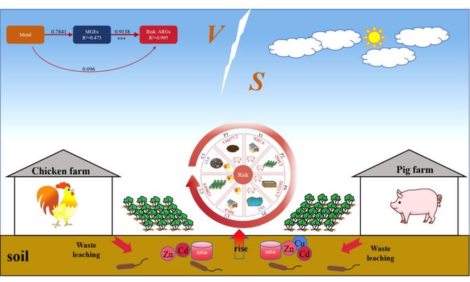



The Road to Recovery 2006-2009
By the British Pig Executive - The Road to Recovery 2006-2009 is a revised and updated strategy for prosperity in the England and Wales pig production and processing industry. It builds on the successes of the original strategy launched in 2002 and focuses more clearly on those areas where BPEX can use pig levy money to the greatest effect.

|
Introduction
The strategy lays out clearly and simply the challenges and opportunities that the industry faces in the coming years. It redefines the role and activities of BPEX and particularly how best to use a reduced amount of levy funds most effectively. BPEX is totally committed to providing a unique service to pig producers and primary processors that ensures that the use of the levy for co-ordinated industry activity yields a better return for levy payers than they can otherwise achieve acting individually.
Executive Summary
The British market for pork and pork products has remained stable in recent years. However, production
of British pork has declined sharply due to price pressure, disease outbreaks and the undermining of
confidence to invest. In the last year there are signs of some stability but much still needs to be done.
The England and Wales pig production and processing sectors face considerable challenges. Consumer
perception of pork as high in fat is at variance with the facts. The production sector remains at the bottom
of the EU cost of production league, retailer and food service concentration and power are increasing and
political negotiations are likely to result in a liberalisation of world trade within the next three years.
Nevertheless opportunities exist. Pork is well placed to exploit growing consumer demand for taste,
convenience and health. The British market is becoming more segmented with a growing demand for
above mid-range and premium products that England and Wales producers can exploit. The production
cost gap can be bridged with investment in research, development and knowledge transfer and pig
production can make a positive contribution to the environment.
The BPEX mission is to Òenable the England and Wales pig industry to achieve sustainable international
competitiveness through reducing production and processing costs and maximising the value of its pork
and pork products.
The specific objectives of the strategy are to:
- Help the industry recover herd health
- Help the industry improve cost competitiveness to a level at least comparable with our main EU competitors
- Build industry confidence to invest in the future
- Increase the demand for British pork and pork products
- The British Pig Health Scheme in all assured abattoirs.
- An integrated and extensive programme of research, development and knowledge transfer.
- Supporting the national scheme for Continuous Professional Development.
- Supporting the work of the Red Meat Industry Forum.
- Supporting the British Pig Project to encourage investment in new pig buildings.
- Promoting Quality Standard Mark pork and pork products focusing particularly on the above average and premium segments of the market.
- Promoting pork as healthy using the Ò96% fat freeÓ message established successfully in 2005.
- Improving demand for pork and breeding stock in markets outside the EU through gaining access to new markets and supporting export companies in conjunction with other organisations and agencies.
BPEX has identified a plan of activities that will cost a total of £10.5 million a year to deliver. The intention
is to spend £7.3 million a year of pig levy payersÕ money supplemented with £3.2 million from a range of
other sources.
The balance of expenditure will change if co-ordinated supply chains take on more of this work themselves
as an alternative to the statutory BPEX pig levy.
BPEX will be a leader, a catalyst for change, an authoritative
knowledge source and a communicator to and on behalf of the
industry. BPEX will use levy funds for co-ordinated industry
activity that yield a better return for levy payers than they can
otherwise achieve individually.
BPEX will remain a statutory body funded by a single levy paid
by producers and processors. Maximum use will be made of
non-levy funding. It is anticipated that the amount of levy will fall
over time though how fast depends on the speed with which
co-ordinated supply chains undertake the activities identified in
this plan.
Background
The British market for pork and processed pork products has been robust in recent years. Consumption
has remained stable at about 1.45 million tones a year (carcase weight equivalent) or 25 kg per person.
The value of sales has risen and the overall market was valued at £7.3 billion in 2004 (retail sales plus food
service market volumes valued at average retail prices) making pork and pork products the single largest
meat category in the EU.
There have been changes in the pattern of consumption with an increase in processed meats such as
bacon, ham and sausage.This has been driven primarily by the demand for convenience and quality. The
volume of fresh and frozen pork has fallen slightly and in 2004 accounted for approximately 21% of total
consumption. British produced pork dominates this section of the market and is extremely important in
determining the value of British pigs.
In contrast to consumption, production of British pigs has fallen sharply in the last 6 years. Increased
investment in high welfare production systems, a number of disease outbreaks and pressure from the rapid
growth in imports, often with standards of production with respect to welfare below those in the UK, have
all combined to undermine confidence in the industry. Many producers have left the business and sow
numbers have declined. The lack of investment in production facilities and poor herd health has
compromised productivity, which has reduced production further. However, in the last year the decline in
the breeding herd has slowed and there are clear signs that productivity is beginning to recover.
In the processing sector competitive pressure has also been severe. In the primary processing sector the
reduction in pig numbers has resulted in excess slaughter capacity. The resulting pressure on efficiency
combined with the relentless price pressure from major customers, such as retailers and food service
companies, and the loss of many export markets in the wake of CSF and FMD has resulted in abattoir
closures and the amalgamation of a number of companies.
Concentration in the production and processing chain has accelerated as a result of these pressures. Some
pig producers have expanded their operations through acquisition. Others remain committed to the
industry but are no longer prepared to accept the business risks. These producers have found a way
forward through contract production for other producers. It is estimated that in 2004 more than half of
the pigs finished in England and Wales were produced by only 33 pig farming businesses operating mulitiple
units. There have also been several mergers and acquisitions in the primary processing sector. In 2004/05
the five largest companies accounted for 64% of pig slaughtering. 10 years earlier the equivalent figure was
only 37%. This trend is expected to continue in the coming years.
The trend towards greater concentration will give the industry greater benefits of scale in areas such as pig
marketing, the ability to react to customer demand and the acquisition and adoption of new knowledge
and technology. It will also have implications for the role of BPEX in the future.
Further Information
To continue reading this report please Click Here (PDF)
Source: BPEX - January 2006








